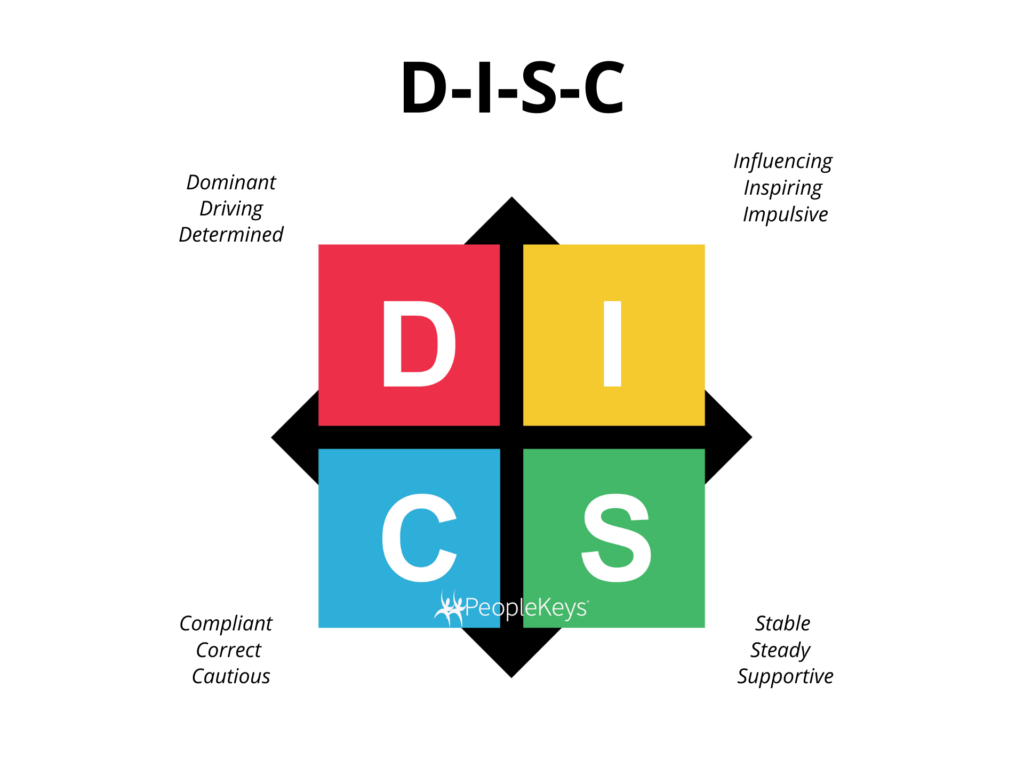What the DISC Measures:
D – Measures How a person Solves Problems & Responds to challenges
I – Measures How a person Attempts to Influence or Persuade others
S – Measures How a person Responds To Rules and Regulations
C – Measures the Pace at which a person Responds To Change
WHAT THE “D” MEASURES
Intensity:
The Higher the D value, the more active and intense an individual will be in trying to overcome problems and obstacles. The lower the D value, the greater the tendency to gather data prior to making a decision.
In an Antagonistic Environment:
The high D responds aggressively & directly.
Emotion:
The D factor measures the assertiveness. The D factor measures the emotion of anger. Those that score lower on the D graph are slower to anger. The higher a person scores on the D graph the more quickly they are to assert themselves.
The Higher the I value, the more verbal the person will be in persuading & influencing others to his/her way of thinking. The lower the I value, the more the person will use data and facts.
In an Antagonistic Environment:
The high I responds actively & may try to negotiate an agreement or apologize quickly.
Emotion:
The I factor measures the emotion of optimism. Those that score lower on the I graph tend to be more pessimistic. The higher a person scores on the I graph the more they are joyful and optimistic.
WHAT THE “S” MEASURES
The Higher the S value, the more the person prefers to start and complete one project at a time. Also, the higher the S, the more resistant to change. The lower the S value, the faster the pace, and the greater is the desire for change.
In an Antagonistic Environment:
The high S responds passively & seeks to blend into situations.
Emotion:
The S factor measures emotional expression. Those that score lower on the S graph are more expressive a person is of their emotions. The higher a person scores on the S graph the more difficult it is to read an individual.
WHAT THE “C” MEASURES
The Higher the C value, the more the person will comply with rules set by others. The lower the C value, the more an individual will challenge rules and seek independence.
In an Antagonistic Environment:
The high C responds passively/aggressively & seeks to justify their actions.
Emotion:
The C factor measures caution. Those that score lower on the C graph the more fearless the individual. The higher a person scores on the C graph the more an individual cautiously and analytically moves forward.

MICHELE BURCH REID, MS FOUNDER OF LCI
More From Michele
What’s the best personality type match for my romantic relationship?
With Valentine’s day approaching, I thought it would be timely to revisit Personality Types as they relate to relationships. The most common question I have received in all the years doing workshops and coaching on Personality Type and Emotional Intelligence in the...
Using Personality Type To Set Your New Year’s Resolution
If you are like most people, you have the best intentions to set a resolution for the New Year. However, sticking to it is a struggle. Or for some, even deciding what to resolve in the first place is a struggle. Here are some suggested focus areas for setting new...
Introverted Feeling (FI)
Introverted Feeling (FI) ISFJ - INFJ The function is making decisions based on your personal values and being concerned more with how things impact you personally than how the group is impacted. Uses personal, deeply held values to ensure an inner sense of...









